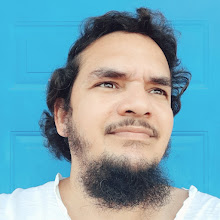This is a chapter from my seventh book called Bookeh - Through the lens of a Trinidadian photog
It is 523am on a Sunday and I am writing this chapter without starting with a photo and without starting with a title. I see a sharpie marker in front of me. I wonder why it is called sharpie? I notice that the word sharpie has the word harp in it. I wonder why it is called harp? In trying to find an answer I found out that in some parts of the world the harmonica is called the mouth harp. There are other names for the harmonica including "tin sandwich". I read that the word harmonica comes from the Latin word harmonicus, which means tuneful or harmonious. The world is full of wonders. If we just stop and look and think and imagine we can wonder lots of things. We begin to ask many questions. What is the origin of the word question itself? Where did the question mark come from? I do not know if it is a joke or not but it is believable. I read an article that suggests that it is an ancient Egyptian symbol that emulates the formation of a cat's tail when it is inquisitive. I noticed that a cat with a hat is a chat while chatting with Gemini.
When I have a question I just Google but what did people do before Google? For some time there were libraries but before libraries? My friend Chatty tells me that before Google and libraries, people relied on oral tradition, written manuscripts, and consulting experts for information. What would the future of asking questions look like? My friend Chatty suggests that the future of asking questions might involve advanced AI and machine learning systems providing instant, context-aware answers, possibly through immersive technologies like augmented reality or brain-computer interfaces, making information retrieval even more seamless and integrated into daily life.
What does photography have to do with asking questions? My friend Chatty thinks that photography can help in asking questions by visually documenting and capturing details that prompt inquiries, stimulate curiosity, and provide evidence or context that can lead to deeper exploration and understanding. I could not decide whether to title this chapter as ponder or wonder. I asked what happens when I combine ponder and wonder? I settled for yonder since this stands for and is pronounced why-onder. I am basically coining a new meaning and version of yonder to mean to think of lots of questions. If I combine photography and questioning I can get questionography or even questography. Makes me think of questionology. My friend Gemini tells me that questionology is the systematic study of questions. It explores the nature, purpose, and impact of questions across various fields, such as philosophy, education, psychology, and communication. Curiosity is the cure for boredom. What could have been a boring Sunday morning turned into a beautiful chapter in this book. A question mark looks like a hook. When we ask questions, we are really fishing for answers. And that is how the photo for this chapter was born. I remembered there was a hook outside to the back of the house and I used it to create an art piece. I also learnt that the word answer contains "nswe" which is the cardinal points north, south, west and east, which is represented in my photo. North to south is the broom handle and west to east is the cardboard signage. The tail of the fish forms an A (for answer) or Y (for yonder) depending on how you look at it.


Comments